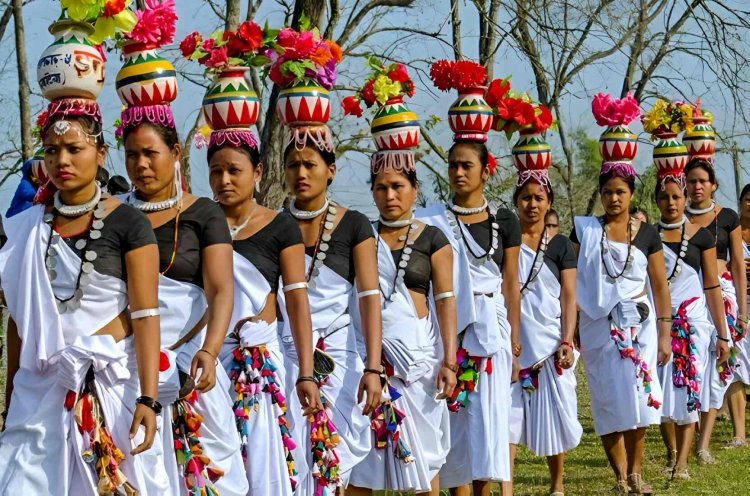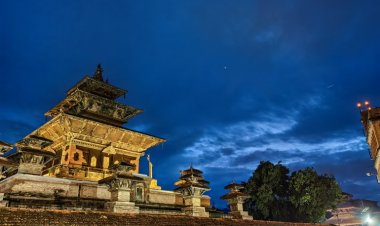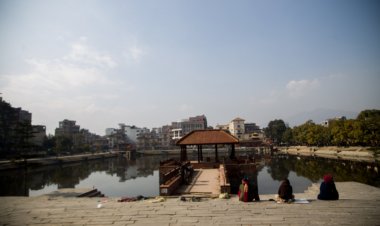Discover the Tharu Culture: An Insight into Traditional Village Life in Nepal
Explore Nepal's unique and fascinating Tharu culture, which provides a glimpse into traditional village life and customs. Learn about their rich heritage and traditions.

Nepal is a country with a rich cultural heritage, and the Tharu people are an integral part of that heritage. The Tharu people are an indigenous ethnic group that has lived in the Terai region of Nepal for centuries. They are believed to have migrated to the Terai region from northern India around 600 years ago. Since then, they have lived in the region, and their culture has evolved to suit the unique environment of the Terai. The Tharu people have their own distinct customs, traditions, and way of life that are deeply rooted in their history and environment.
Tharu people are known for their strong sense of community and their deep connection to the land. They are skilled farmers and have a long history of cultivating crops in the difficult conditions of the Terai region. The Tharu people have a matrilineal system of inheritance, which means that property and land are passed down through the mother's side of the family. They have their own dialect and writing system called "Rana Tharu" which is considered as a separate language by some linguistic experts.
Traditional Tharu Village Architecture and Housing
Traditional Tharu village architecture and housing are integral parts of Tharu culture and reflect the community's deep connection to the land. Tharu villages are typically small and compact, with houses close together. The traditional Tharu house is made of mud and straw, with a thatched roof. These houses are typically small and simple, with one or two rooms. The main room is used for cooking, eating, and sleeping, while the other room is used for storage. The houses are built on stilts to protect against flooding during the monsoon season.
The houses are typically square-shaped, with a small entrance and a few small windows. The walls are made of mud and straw, and the roof is made of thatch. The thatch is typically made from the dried leaves of the sal tree, which is abundant in the Terai region. The thatch is tied to the bamboo or wooden frame of the roof, and the roof is sloped to allow for proper drainage.
The traditional Tharu house is not only functional but also reflects the community's deep connection to the land. The houses are built using materials that are readily available in the local area, such as mud, straw, and bamboo. This not only makes the houses affordable, but it also helps to promote sustainability.
The traditional Tharu house is an important aspect of Tharu culture and reflects the community's close-knit way of life. The houses are typically small and simple, but they provide the Tharu people with everything they need to live a comfortable life. The houses are designed to be functional and practical, while also reflecting the community's deep connection to the land.
Tharu Customs and Traditions
Tharu culture is rich in customs and traditions, and marriage and family life are important aspects of this culture. The Tharu people place a strong emphasis on family and community, and extended families often live together in the same house. Marriage is an important rite of passage in Tharu culture, and it is typically arranged by the parents.
In terms of marriage, the Tharu people have their own traditional customs. For example, the groom's family visits the bride's family with a traditional offering called "Dhikuti", which includes a piece of cloth, jewelry, and a small amount of money. The bride's family then accepts the offer, and the wedding date is set. The wedding ceremony is a grand event, with music, dance, and a feast. The bride and groom are decorated with traditional clothing and jewelry.
The Tharu also follow a matrilineal system of inheritance, which means that property and land are passed down through the mother's side of the family. This is a unique aspect of Tharu culture and reflects their deep connection to the land and their ancestors.
Tharu customs and traditions related to marriage and family life are an important aspect of Tharu culture, which reflects the community's deep connection to the land and their ancestors. The matrilineal system of inheritance and traditional customs related to marriage reflect the importance of family and community in Tharu culture. These customs and traditions are an integral part of Tharu culture, and it is important that they are preserved for future generations.
Tharu Agricultural Practices and Food Culture
The Tharu are primarily farmers, and their way of life is closely tied to the land. They grow a variety of crops, including rice, wheat, and vegetables. The Tharu also keep animals, such as cows, goats, and buffaloes. They are known for their skill in cultivating crops in the difficult conditions of the Terai. The Tharu diet is simple and nutritious, consisting mostly of rice, lentils, and vegetables. Tharu people are also famous for their homemade alcohol, called "Chang" which is made from millet or rice.
Tharu Music and Dance
Tharu culture is rich in music and dance. The traditional Dhol-Damai performance is a popular form of entertainment in Tharu villages. The Dhol-Damai is a musical ensemble that includes a dhol (drum) and a damai (lute). The music is lively and upbeat, and the dance is characterized by rapid footwork and energetic movements. The traditional Dhol-Damai performance is usually performed during festivals and other special occasions.
The Dhol-Damai performance is an important aspect of Tharu culture and reflects the community's deep connection to the land and their ancestors. The music and dance are an expression of the Tharu people's joy and vitality, and they are often performed to celebrate special occasions such as weddings and festivals.
The dhol is a traditional drum that is played by striking it with sticks. The Damai is a traditional lute that is played by plucking the strings. The combination of the Dhol and Damai creates a lively and upbeat sound that is characteristic of Tharu music. The Dhol-Damai performance is typically led by a Damai player, who sets the rhythm and melody, while the other musicians join in with their instruments.
The dance that accompanies the Dhol-Damai performance is characterized by rapid footwork and energetic movements. The dancers, usually men, move in synchrony with the music and the rhythm, and the dance is a celebration of life and joy. The dancers wear traditional Tharu clothing, which is usually brightly colored and adorned with intricate patterns and designs.
The traditional Dhol-Damai performance is not only an important aspect of Tharu culture, but it also serves as a means of preserving and passing on Tharu heritage to future generations. Many young people are taught how to play the Dhol and Damai and participate in the Dhol-Damai performances, ensuring that the tradition will continue.
The Role of Religion and Spirituality in Tharu Culture
The role of religion and spirituality in Tharu culture is an important aspect that reflects the community's deep connection to the land and their ancestors. The Tharu people have a deep spiritual connection to the land, and they believe in a wide variety of gods and goddesses who are associated with different aspects of life such as agriculture, health, and fertility.
One of the key aspects of the Tharu religion is ancestor worship. The Tharu people believe that their ancestors continue to watch over them and that they can be called upon for guidance and protection. They often make offerings to their ancestors, such as food and other gifts, to ensure that they are remembered and honored.
Another important aspect of Tharu religion is the worship of nature gods and goddesses. The Tharu people believe that the natural world is inhabited by a wide variety of gods and goddesses who are associated with different aspects of nature such as rivers, forests, and animals. They perform rituals and make offerings to these gods and goddesses to ensure that they are protected and that they will bring prosperity and good luck.
The Tharu people also have a strong belief in the power of magic and charms, and they often use these to ward off evil spirits and bring good luck. They also have traditional healers, known as "Jhakri" who are believed to have supernatural powers and are consulted for healing and protection.
The Impact of Modernization and Development on Tharu Communities
The impact of modernization and development on Tharu communities is a concern because it can lead to the erosion of traditional Tharu culture. The Terai region of Nepal, where the majority of the Tharu people live, has undergone rapid development and modernization in recent years. This has led to changes in the way of life of the Tharu people, and many have been forced to leave their traditional homes and way of life.
The construction of dams and the expansion of agriculture have led to the displacement of many Tharu families from their traditional lands. This displacement has led to a loss of access to traditional farming lands and resources, which has had a significant impact on the livelihoods of the Tharu people. Many have been forced to move to urban areas in search of work, which has led to the erosion of traditional Tharu culture as many young people leave the villages for better education and job opportunities.
The rise of cities and towns in the Terai region has also led to the erosion of traditional Tharu culture, as many young people leave the villages for better education and job opportunities. This has led to a loss of traditional skills and knowledge, as well as a loss of connection to the land and their ancestors.
Overall, modernization and development have had a significant impact on Tharu communities. The displacement of many families from their traditional lands and the erosion of traditional culture are the main concerns. The Tharu people are resilient and have adapted to these changes in their own way, but it's important to recognize the impact of modernization and development on their communities and work towards preserving their culture and heritage.
Conservation Efforts to Preserve Tharu Culture and Heritage
Conservation efforts to preserve Tharu culture and heritage are important to ensure that this unique aspect of Nepal's cultural heritage is not lost. These efforts include a variety of initiatives, both government-led and those by non-governmental organizations (NGOs), to support the Tharu community and preserve their culture.
One of the key initiatives is the government's efforts to support the Tharu community through programs such as scholarships for young people, health care facilities, and other forms of assistance. This helps to ensure that the Tharu people have access to the resources they need to maintain their way of life and pass on their culture to future generations.
NGOs and other organizations are also working to promote the rights of the Tharu people and preserve their culture. These organizations work closely with the Tharu community to develop sustainable development programs, provide education and training, and promote cultural preservation activities. For example, organizations like the Tharu Welfare Society and the Center for Tharu Culture and Heritage are working in this direction.
Community-based tourism is also becoming an important tool for preserving Tharu culture. Visitors to Nepal can experience and learn about Tharu culture by staying in a traditional Tharu village and participating in activities such as farming, cooking, and traditional music and dance performances. This not only provides an opportunity for visitors to learn about Tharu culture, but it also generates income for the community, which helps to support the preservation of their culture.
In addition to these efforts, the Tharu Cultural Museum in Chitwan, Nepal, is a platform to learn about and explore Tharu culture and tradition. The museum exhibits the traditional Tharu lifestyle, culture, and customs in an interactive way.
It's important to note that the preservation of Tharu culture is an ongoing process that requires continuous efforts by the government, NGOs, and the community. As modernization and development continue to impact Tharu communities, it's essential that conservation efforts are adapted and improved to ensure that the Tharu culture and heritage are protected for future generations.
Opportunities for Visitors
Visitors to Nepal can experience and learn about Tharu culture by staying in a traditional Tharu village. Many Tharu families now offer homestays, which provide visitors with the opportunity to live with a Tharu family and learn about their way of life. Community-based tourism is also becoming popular in Tharu villages, with visitors participating in activities such as farming, cooking, and traditional music and dance performances.
Importance to Preserving Nepal's Diversity
Tharu culture is a unique and fascinating aspect of Nepal's cultural heritage. The Tharu people have a deep connection to the land and their ancestors, and their customs and traditions reflect this connection. The Tharu culture is rich in music and dance, and the traditional Dhol-Damai performance is a particularly interesting aspect of Tharu culture. The impact of modernization and development on Tharu communities is a concern, but there are efforts being made to preserve Tharu culture and heritage, including homestays and community-based tourism. The Tharu culture is an important part of Nepal's diversity, and it is essential that it is preserved for future generations.
What's Your Reaction?





































































































